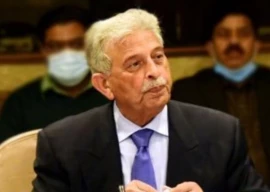
There was an aggressive social media debate with passions running high on both sides after the cricket match between Pakistan and Afghanistan in the recent cricket World Cup. “Peace with Afghanistan at almost all costs” is our social, economic, strategic and military imperative. The love-hate relationship between the two countries is not new. Pakistan has always displayed greater restraint and accommodation; although we have remained forceful beyond a certain threshold. Non-involuntary repatriation of the Afghan refugees (most of whom are poor residents of rural areas); letting Afghan students study in Pakistan and learn cricket; allowing Afghan patients treatment in our hospitals; tolerating economic pursuits of Afghans of all ethnicities; holding the Mujahideen/Taliban card and the stated policy of Afghan-led and Afghan-owned inter and intra Afghan dialogue; are our wise policies.
There has been sporadic criticism of Pakistan’s reliance on the Afghan Pashtuns at the cost of non- Pashtuns. Here too, the Foreign Office and the military have done a good job. One needs to understand that non-Pashtun Afghans are significantly, if not fully, hand in glove with our nemesis. Besides, Pashtuns have represented the ruling elite in Kabul and beyond; and have always been instrumental in fighting the occupational forces and bore the brunt of the most brutal fighting. They share kinship and enjoy the traditional Easement Rights (permission to cross the Border for social and economic reasons) across the Durand Line. However, our policy makers have made serious overtures to the non-Pashtun Afghans in the past and they continue to do so.
In the zero-sum Afghan game, we need to understand, that India has traditionally invested heavily in visible projects in Afghanistan (like the Indira Gandhi Children Hospital in Kabul) and there has been greater amity between India and Afghanistan, engendered by historic and socio-economic ties and complemented by Hindi cinema — except under the Taliban rule — where India had curtailed leverage. There is no surprise when the Afghan players were wearing the Amul insignia on their shirts. India has nimbly replaced the Pakistani clout in the aftermath of the US supported take-over of Afghanistan by the Northern Alliance. We need to ponder as to why could the Pakistani corporate sector not support the Afghan team?
We also need to understand that Afghans by their nature, psyche and sociology will never remain perpetually indebted for any favour done to them. They would return such khegara or shegara (favour) as early and as best as possible, in order to re-establish the egalitarian equilibrium with their benefactor(s).
Our expectations of them to be grateful forever, for what Pakistan has done for them is, therefore, misplaced, non-pragmatic and lacking our socio-anthropological understanding of Afghans.
Our policy makers also need to look beyond the bogey of Pashtunistan. Keeping aside etymology, Afghans/ Pashtuns/ Pukhtuns and/ or Pathans once belonged to the Afghan Empire just like the dozens of ethnicities that once belonged to the erstwhile Ottoman Empire. Since 1901, with the creation of NWFP by the British Raj, even Afghan Pukhtuns have looked south towards the Indian Subcontinent with economic optimism. Pashtuns today are economically well integrated into the Pakistani state and society, and look towards Islamabad rather than Kabul, which has its endemic challenges. One recollects an inadvertent crossing of Durand Line a few years ago, ending up in an Afghan town, called Spina Thana opposite the Pakistani town of Bagan in Kurram Agency. The local people had only one question: when would they get the Pakistani ID Card.
Finally, Afghanistan should not be divides along any ethnic or political fault lines. It is not in Pakistan’s interest. Pakistan would never want to dilute the Pashtun card. Afghanistan had and would only survive as a nation state, when the Pashtun ruling elite dominate the relatively docile non-Pashtun highlanders and keep the country together. This is a harsh reality of their volatile history. The stronger side carries the day.
Pashtuns enjoy a dominant position since the times of Amir Abdur Rehman, the Iron Amir, when he forcibly settled Pashtun tribes giving them vast land titles to dominate the non-Pashtun areas. Even the ethnic cleansing in the aftermath of the take-over by the Northern Alliance has not been able to undermine their elevated social status. Additionally, a North-South division would make the Northern non-Pashtun half more isolated, economically dependent on the south, and hence non-sustainable.
One recollects Dr. Abdullah Abdullah saying that the non-Pashtun pre-eminence after the US led invasion was not unusual and needs to be accepted as such. The Northern Alliance’s ascent to power was a historic aberration, as it was manufactured by foreign forces against a predominant social and sociological status-quo. The consequent violence and political turmoil were natural by-products. He perhaps did not know then that historic aberrations are corrected at great cost, as can be seen. The current mood among Afghans of all ethnicities also does not support division of their country. The flexibility shown by the Taliban in Doha recently, towards a participative power-sharing arrangement in the future, works well for the unity of Afghanistan.
Published in The Express Tribune, July 23rd, 2019.
Like Opinion & Editorial on Facebook, follow @ETOpEd on Twitter to receive all updates on all our daily pieces.



























1714024018-0/ModiLara-(1)1714024018-0-270x192.webp)









COMMENTS
Comments are moderated and generally will be posted if they are on-topic and not abusive.
For more information, please see our Comments FAQ